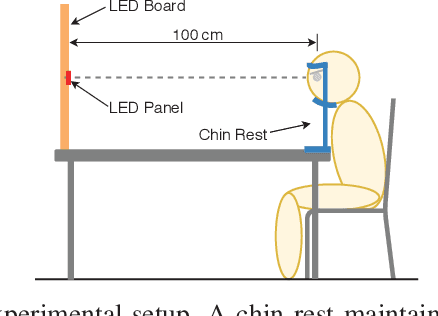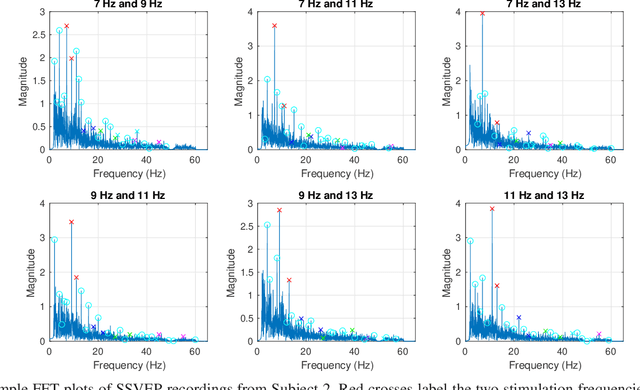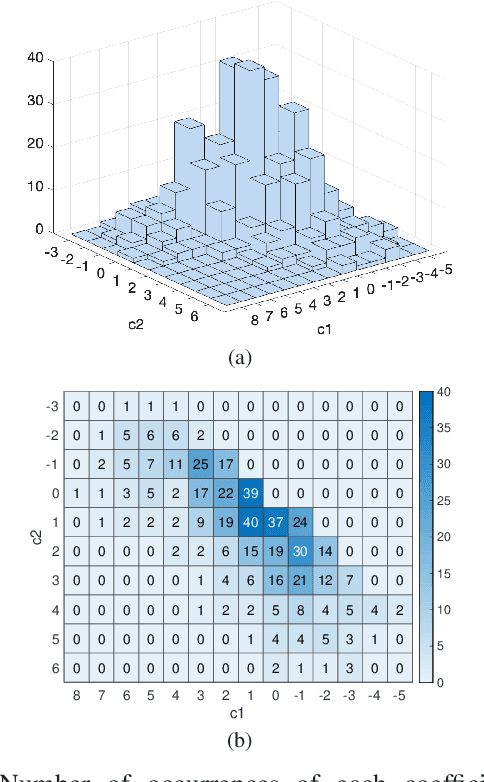Frequency Superposition -- A Multi-Frequency Stimulation Method in SSVEP-based BCIs
Paper and Code
Apr 25, 2021



The steady-state visual evoked potential (SSVEP) is one of the most widely used modalities in brain-computer interfaces (BCIs) due to its many advantages. However, the existence of harmonics and the limited range of responsive frequencies in SSVEP make it challenging to further expand the number of targets without sacrificing other aspects of the interface or putting additional constraints on the system. This paper introduces a novel multi-frequency stimulation method for SSVEP and investigates its potential to effectively and efficiently increase the number of targets presented. The proposed stimulation method, obtained by the superposition of the stimulation signals at different frequencies, is size-efficient, allows single-step target identification, puts no strict constraints on the usable frequency range, can be suited to self-paced BCIs, and does not require specific light sources. In addition to the stimulus frequencies and their harmonics, the evoked SSVEP waveforms include frequencies that are integer linear combinations of the stimulus frequencies. Results of decoding SSVEPs collected from nine subjects using canonical correlation analysis (CCA) with only the frequencies and harmonics as reference, also demonstrate the potential of using such a stimulation paradigm in SSVEP-based BCIs.
 Add to Chrome
Add to Chrome Add to Firefox
Add to Firefox Add to Edge
Add to Edge